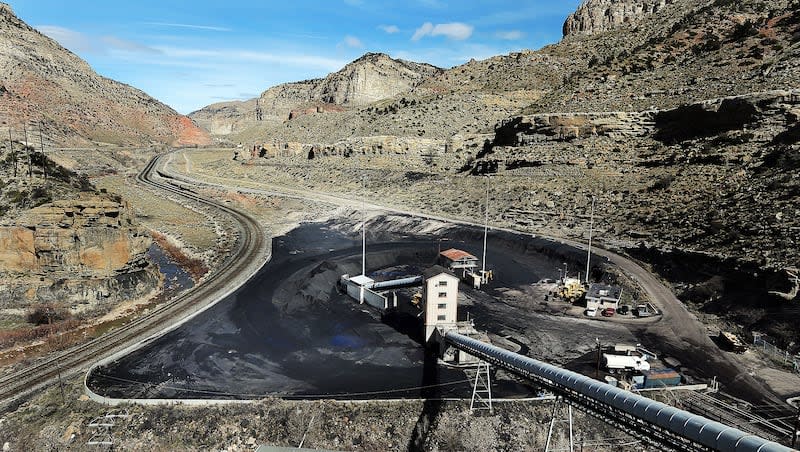PacifiCorp plan will delay the early retirement of coal-fired power plants in Utah

PacifiCorp released an update to its 20-year plan for energy resource investments, making a significant departure from what was submitted last year to the Public Service Commission.
“PacifiCorp’s long-range planning provides a framework for future actions the company anticipates will be needed to provide the reliable and essential electric service our customers expect and deserve,” said Rick Link, senior vice president of resource planning.
“We are focused on four core objectives as we plan to serve our customers in the future: reliability, resilient infrastructure, fair and reasonable prices, and a continued transition to clean and non-emitting sources of energy along the important trajectory of reduced carbon emissions,” he added.
A release by the company said key changes in the update are being driven by significant regulatory and judicial decisions that include the U.S. Environmental Protection Agency’s approval of Wyoming’s state Ozone Transport Rule plan and a U.S. district court stay of the EPA’s disapproval of Utah’s state Ozone Transport Rule plan.
What that means is a delay in the retirement of coal-fired power plants, including two located in Utah’s Emery County and a couple of units at the Jim Bridger plant in Wyoming. The utility said it will install carbon capture technology on those units in Wyoming.
“Our IRP update delivers customers significant near-term cost savings by avoiding accelerated closures and deferring portions of our previous resource acquisition plans while our longstanding commitment to ensuring reliable service to our customers will require continued investments in several areas,” Link said.
Under the old plan, coal was set to retire by 2032. Huntington gets four more years of operational life while the Hunter Plant continues to operate until 2042.
In fact, within the fleet of the utility’s coal-fired power plants and expected retirement years, Utah stands out as having the most aggressive extension on the life of its coal facilities.
The update, PacifiCorp stressed, contemplates:
9,818 megawatts of new wind resources.
4,016 megawatts of storage resources, including batteries collocated with solar generation, standalone batteries and pumped hydro storage resources.
3,763 megawatts of new solar resources (most paired with battery storage).
4,326 megawatts of capacity saved through energy efficiency programs.
But clean energy advocates say the utility company is putting clean energy investments on the back burner with this updated plan.
“It is a huge reduction in clean energy,” said Logan Mitchell, climate scientist and energy analyst with Utah Clean Energy. “It is a massive flip flop between what they released last year and now. ... Solar and storage continue to fall in price. And so it’s really baffling. It really doesn’t even make sense.”
Critics suspect pro-coal measures prioritized and passed during the last legislative session in Utah are a signal to PacifiCorp to delay early retirements of coal-fired power plants. The changes include passage of a law that puts reliability and affordability over clean energy and another measure that Mitchell said gives a “pass” to coal because the utility will not have to justify its costs.
But Brian Somers, president of the Utah Mining Association, praised the adopted legislation.
“The Utah Mining Association is grateful for the numerous actions the legislature took in the recently-concluded session to protect Utah’s energy independence,” he said. “Ensuring our coal plants — which provide nearly two-thirds of the affordable and reliable electricity on which all Utahns depend — can operate well into the future helps guarantee our economy and quality of life will not be diminished by the types of rolling blackouts and massively escalating costs we’ve seen in so many other states.”
Renewables left behind?
Mitchell crunched the numbers in the update to what’s called the Integrated Resource Plan and, over PacifiCorp’s entire region, there is 53% less investment in new wind, 68% less investment in solar and a 79% decline in storage for renewables in the year 2030.
Mitchell said the stark contrast between the original plan and the update released earlier this week creates a chasm of uncertainty for the renewable energy industry, advocates and ratepayers.
“It just seems really bizarre because the plan keeps switching.”
Like Somers, Rep. John Curtis, R-Utah, praised the updated plan.
“The decision by Rocky Mountain Power to extend the life of coal plants shows why market driven policies are better answers than the government picking winners and losers,” he said. “We can’t move faster than the pace of technology if we want a reliable and resilient energy grid. With Utah’s natural resources, it is possible to reach our goal of affordable, reliable and clean energy.”
Correction: A previous version of this story had incorrect numbers related to PacifiCorp’s planned investments in renewable energy.

